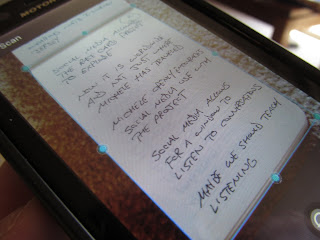Week 4
I was assigned a wonderful student's blog post titled "Equality For All". I commended the student for being so young and standing up for a strong belief for marriage equality. That subject is not taken well in today's world, much less living in the south. I supported her by saying my friends and I believe in equality for all people. In her post she used a close friend at her old school who blurred the lines of fashion as her way of saying "People should not be treated differently for who they are but how they treat others. This I believe; in equality for all". I told her that gave it a more personal touch than just another person ranting about equality. I summed my comment up by saying she caught my attention and held it, which is a sign of a good writer or blogger. I left a comment asking if she likes to write or act (her voice recording had a lot of personality) and I hope to hear back from her!
Week 5
This week I was assigned to Billon's blog! His topic on "Being Teacher and Principal For A Day" made me smile! Reading about all the sports and games he wanted to play with his students all day made me reminisce about the days when I wished I could change school too. It hit me when writing a comment that in a few years I will be the teacher. I will be the one in charge. I will be the one to make a change for these students. I asked him if he would teach me some of the games he listed I had never heard of. I also warned him Redrover Crossover was my favorite, and I was pretty good so watch out! He asked his readers what they would do if they could be teacher for a day so I responded by telling him I would like to use movies to help my students learn. I asked if he would like that as a student, hopefully he approves!
Week 6
I had the pleasure of visiting Simon's blog this week! Simon told us about what they did in class on Tuesday, September 17. The kids are learning the story about Esther but have stopped for the day on a sad note. Simon told how into the story he was but was worried what was to come. I shared with Simon that my favorite biblical story was Esther and that the story ended well.
Week 7
I got to visit Ashley's blog this week, and her post was very inciteful! Ashley's blog post was titled Do Birds Get Shocked When They Sit On Wires?. I commended her on teaching me something! I must admit I too have wondered why birds do not get shocked while resting on electrical wires. Ashley told us that birds do not get shocked because they are not good heat conductors. I thanked her for teaching me something!
Week 5
This week I was assigned to Billon's blog! His topic on "Being Teacher and Principal For A Day" made me smile! Reading about all the sports and games he wanted to play with his students all day made me reminisce about the days when I wished I could change school too. It hit me when writing a comment that in a few years I will be the teacher. I will be the one in charge. I will be the one to make a change for these students. I asked him if he would teach me some of the games he listed I had never heard of. I also warned him Redrover Crossover was my favorite, and I was pretty good so watch out! He asked his readers what they would do if they could be teacher for a day so I responded by telling him I would like to use movies to help my students learn. I asked if he would like that as a student, hopefully he approves!
Week 6
I had the pleasure of visiting Simon's blog this week! Simon told us about what they did in class on Tuesday, September 17. The kids are learning the story about Esther but have stopped for the day on a sad note. Simon told how into the story he was but was worried what was to come. I shared with Simon that my favorite biblical story was Esther and that the story ended well.
Week 7
I got to visit Ashley's blog this week, and her post was very inciteful! Ashley's blog post was titled Do Birds Get Shocked When They Sit On Wires?. I commended her on teaching me something! I must admit I too have wondered why birds do not get shocked while resting on electrical wires. Ashley told us that birds do not get shocked because they are not good heat conductors. I thanked her for teaching me something!
"





